AIR-AP1131G-P-K9 Specification
|
| Part Number |
AIR-AP1131G-P-K9 |
| Product Description |
802.11g Integrated Auto AP; Int Antennas; Japan2 Cnfg 1130G Series Access Points |
| Software |
Cisco IOS Software |
| Data Rates Supported |
802.11g: 1, 2, 5.5, 6, 9, 11, 12, 18, 24, 36, 48, and 54 Mbps |
| Network Standard |
IEEE 802.11b and 802.11g |
| Uplink |
Autosensing 802.3 10 and 100BASE-T Ethernet |
| Frequency Band and Operating Channels |
Americas (FCC)
• 2.412 to 2.462 GHz; 11 channels
• ETSI
• 2.412 to 2.472 GHz; 13 channels
Japan (TELEC)
• 2.412 to 2.472 GHz; 13 channels Orthogonal Frequency Division Multiplexing (OFDM)
• 2.412 to 2.484 GHz; 14 channels Complementary Code Keying (CCK)
• 5.15 to 5.25 GHz; 4 channels
Japan-P (TELEC 2 (Japan2) Cnfg)
• 2.412 to 2.472 GHz; 13 channels Orthogonal Frequency Division Multiplexing (OFDM)
• 2.412 to 2.484 GHz; 14 channels Complementary Code Keying (CCK)
• 5.15 to 5.35 GHz, 8 channels
Japan-Q
• 2.412 to 2.472 GHz; 13 channels Orthogonal Frequency Division Multiplexing (OFDM)
• 2.412 to 2.484 GHz; 14 channels Complementary Code Keying (CCK)
• 5.15 to 5.35 GHz; 8 channels
• 5.470 to 5.725 GHz; 11 channels |
| Nonoverlapping Channels |
802.11b/g: 3 |
| Receive Sensitivity (Typical) |
802.11g:
• 1 Mbps: -93 dBm
• 2 Mbps: -91 dBm
• 5.5 Mbps: -88 dBm
• 6 Mbps: -86 dBm
• 9 Mbps: -85 dBm
• 11 Mbps: -85 dBm
• 12 Mbps: -84 dBm
• 18 Mbps: -83 dBm
• 24 Mbps: -79 dBm
• 36 Mbps: -77 dBm
• 48 Mbps: -72 dBm
• 54 Mbps: -70 dBm |
| Available Transmit Power Settings (Maximum Power Setting Will Vary by Channel and According to Individual Country Regulations) |
802.11b:
CCK:
• 20 dBm (100 mW)
• 17 dBm (50 mW)
• 14 dBm (25 mW)
• 11 dBm (12 mW)
• 8 dBm (6 mW)
• 5 dBm (3 mW)
• 2 dBm (2 mW)
• -1 dBm (1 mW) |
802.11g:
OFDM:
• 17 dBm (50 mW)
• 14 dBm (25 mW)
• 11 dBm (12 mW)
• 8 dBm (6 mW)
• 5 dBm (3 mW)
• 2 dBm (2 mW)
• -1 dBm (1 mW)
|
| Range |
Indoor (Distance Across Open Office Environment): |
Outdoor: |
| 802.11g:
• 100 ft (30m) @ 54 Mbps
• 175 ft (53m) @ 48 Mbps
• 250 ft (76m) @ 36 Mbps
• 275 ft (84m) @ 24 Mbps
• 325 ft (100m) @ 18 Mbps
• 350 ft (107m) @ 12 Mbps
• 360 ft (110m) @ 11 Mbps
• 375 ft (114m) @ 9 Mbps
• 400 ft (122m) @ 6 Mbps
• 420 ft (128m) @ 5.5 Mbps
• 440 ft (134m) @ 2 Mbps
• 450 ft (137m) @ 1 Mbps |
802.11g:
• 120 ft (37m) @ 54 Mbps
• 350 ft (107m) @ 48 Mbps
• 550 ft (168m) @ 36 Mbps
• 650 ft (198m) @ 24 Mbps
• 750 ft (229m) @ 18 Mbps
• 800 ft (244m) @ 12 Mbps
• 820 ft (250m) @ 11 Mbps
• 875 ft (267m) @ 9 Mbps
• 900 ft (274m) @ 6 Mbps
• 910 ft (277m) @ 5.5 Mbps
• 940 ft (287m) @ 2 Mbps
• 950 ft (290m) @ 1 Mbps |
| Ranges and actual throughput vary based upon numerous environmental factors, so individual performance may differ. |
| Compliance |
Standards
Safety
• UL 60950-1
• CAN/CSA-C22.2 No. 60950-1
• UL 2043
• IEC 60950-1
• EN 60950-1
• NIST FIPS 140-2 level 2 validation
Radio Approvals
• FCC Part 15.247
• RSS-210 (Canada)
• EN 300.328 (Europe)
• ARIB-STD 33 (Japan)
• ARIB-STD 66 (Japan)
• AS/NZS 4268.2003 (Australia and New Zealand)
• EMI and Susceptibility (Class B)
• FCC Part 15.107 and 15.109
• ICES-003 (Canada)
• VCCI (Japan)
• EN 301.489-1 and -17 (Europe)
Security
• 802.11i, WPA2, WPA
• 802.1X
• AES, TKIP
• FIPS 140-2 Pre-Validation List
• Common Criteria (when running Cisco IOS Software)
Other
• IEEE 802.11g
• FCC Bulletin OET-65C
• RSS-102 |
| Antennas |
• 2.4 GHz
• Gain: 3.0 dBi
• Horizontal beam width: 360° |
| Security |
Authentication
Security Standards
• WPA
• WPA2 (802.11i)
• Cisco Temporal Key Integrity Protocol (TKIP)
• Cisco Message Integrity Check (MIC)
• IEEE 802.11 Wired Equivalent Privacy (WEP) keys of 40 and 128 bits
802.1X EAP types:
• EAP Flexible Authentication via Secure Tunneling (EAP FAST)
• Protected EAP Generic Token Card (PEAP GTC)
• PEAP Microsoft Challenge Authentication Protocol Version 2 (PEAP MSCHAP)
• EAP Transport Layer Security (EAP TLS)
• EAP Tunneled TLS (EAP TTLS)
• EAP Subscriber Identity Module (EAP SIM)
• Cisco LEAP
Encryption
• Advanced Encryption Standard Counter Mode with Cipher Block Chaining Message Authentication Code Protocol (AES CCMP) encryption (WPA2)
• TKIP (WPA)
• Cisco TKIP
• WPA TKIP
• IEEE 802.11 WEP keys of 40 and 128 bits |
| Status LEDs |
External:
• Status LED indicates operating state, association status, error or warning condition, boot sequence, and maintenance status
Internal:
• Ethernet LED indicates status of activity over the Ethernet
• Radio LED indicates status of activity over the radios |
| Dimensions (H x W x D) |
7.5 x 7.5 x 1.3 in. (19.1 x 19.1 x 3.3 cm) |
| Weight |
1.5 lb (0.67 kg) |
| Environmental |
Operating
• Altitude: 0 to 2500m
• 32 to 104°F (0 to 40°C)
• 10 to 90% humidity (noncondensing)
Non Operating
• -40 to 158F (-40 to 70C)
• Up to 95% humidity (noncondensing) |
| System Memory |
• 32 MB RAM
• 16 MB flash memory |
| Input Power Requirements |
• 100-240 VAC; 50-60 Hz (power supply)
• 36-57 VDC (device) |
| Power Draw |
9.91W maximum |
 Samsung MZ-7PC128Z 830 Series 128GB 2.5" MLC SSD SATA Hard Drive
1 × AED1,439.00
Samsung MZ-7PC128Z 830 Series 128GB 2.5" MLC SSD SATA Hard Drive
1 × AED1,439.00  Allied Telesis AT-GS920/16 network switch Unmanaged Gigabit Ethernet (10/100/1000) 1U Grey
1 × AED2,299.00
Allied Telesis AT-GS920/16 network switch Unmanaged Gigabit Ethernet (10/100/1000) 1U Grey
1 × AED2,299.00 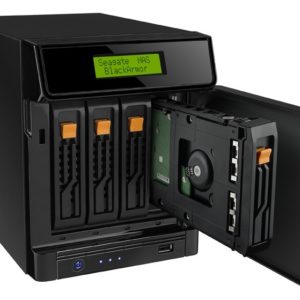 BlackArmor NAS 440 4TB Storage Server USB 2.0 Ethernet
1 × AED2,499.00
BlackArmor NAS 440 4TB Storage Server USB 2.0 Ethernet
1 × AED2,499.00 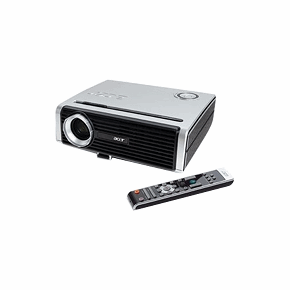 Acer PD 528
1 × AED4,999.00
Acer PD 528
1 × AED4,999.00  HP LaserJet 4345MFP 220v maintenance kit
1 × AED1,589.00
HP LaserJet 4345MFP 220v maintenance kit
1 × AED1,589.00  AdderView Matrix MP, 16-Ports
1 × AED5,399.00
AdderView Matrix MP, 16-Ports
1 × AED5,399.00  Avenview AVXWALL Modular 4K Video Wall Controller Chassis with 6 x 12 1080p HDMI I/O Cards
1 × AED130,699.00
Avenview AVXWALL Modular 4K Video Wall Controller Chassis with 6 x 12 1080p HDMI I/O Cards
1 × AED130,699.00 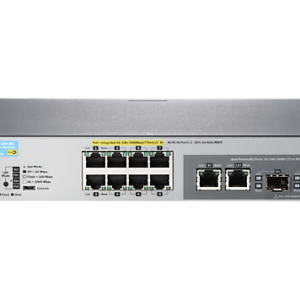 HP 2530-8G-PoE+ Switch
1 × AED2,059.00
HP 2530-8G-PoE+ Switch
1 × AED2,059.00 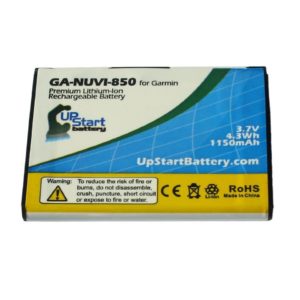 Garmin 361-00033-01 Battery - Replacement for Garmin GPS Navigator Battery (1150mAh, 3.7V, Lithium Polymer)
1 × AED199.00
Garmin 361-00033-01 Battery - Replacement for Garmin GPS Navigator Battery (1150mAh, 3.7V, Lithium Polymer)
1 × AED199.00  HP Color LaserJet Pro MFP M476nw Print, copy, scan, fax with Wireless Network
1 × AED1,599.00
HP Color LaserJet Pro MFP M476nw Print, copy, scan, fax with Wireless Network
1 × AED1,599.00  HP Proliant 651314-001 LFF 3.5" SATA SAS drive Tray Caddy
1 × AED269.00
HP Proliant 651314-001 LFF 3.5" SATA SAS drive Tray Caddy
1 × AED269.00  Cisco Industrial Ethernet 1000 Series - switch - 5 ports - managed IE-1000-4T1T-LM
1 × AED2,699.00
Cisco Industrial Ethernet 1000 Series - switch - 5 ports - managed IE-1000-4T1T-LM
1 × AED2,699.00 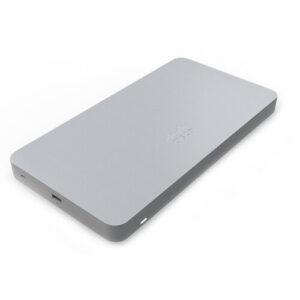 Cisco Meraki MX68 Router/Security Appliance with 5-Year Secure SD-WAN Plus License and Support
1 × AED25,499.00
Cisco Meraki MX68 Router/Security Appliance with 5-Year Secure SD-WAN Plus License and Support
1 × AED25,499.00  04 3550600
04 3550600 052 7036860
052 7036860







There are no reviews yet.